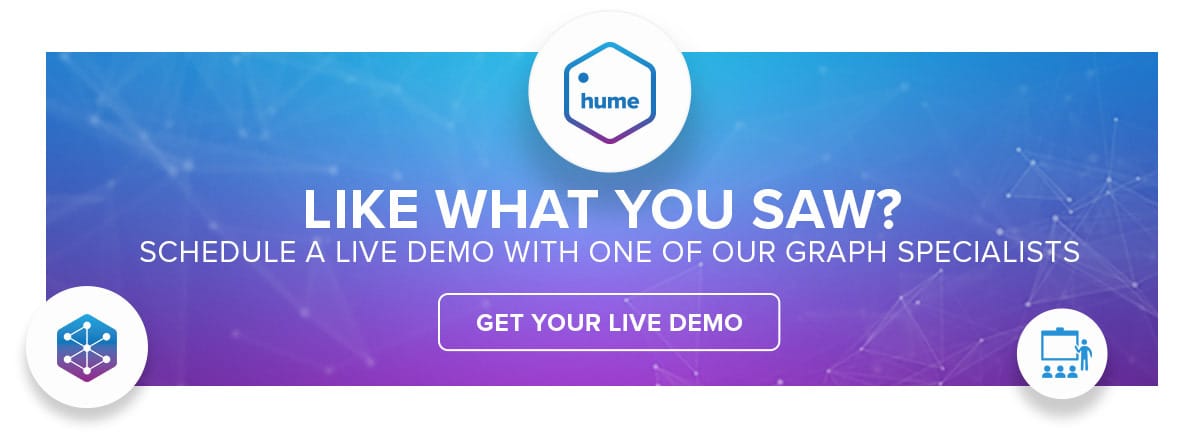The webinar Graphs in Criminal Intelligence was run by Dan Newland, General Manager of ANZ, GraphAware, who is highly experienced with the implementation of graph solutions in several government organisations in Australia.
Graphs can be truly transformational for law enforcement agencies. Dan presented how a cutting-edge graph solution can eliminate obstacles in the criminal intelligence process and increases its efficiency.
Here you will find the complete recording of the webinar, and we will briefly summarise the topics discussed.
Curious how graph analytics solution Hume solves the challenges of law enforcement agencies? Find out in the webinar video below.
What are Neo4j and Hume?
Hume is a mission-critical graph analytics solution that puts the power of Neo4j native graph performance in the hands of intelligence analysts.
Hume provides a simple-to-use interface on top of Neo4j that allows intelligence analysts to search, visualise and analyse intelligence graphs.
How graphs solve the challenges of modern intelligence
Intelligence teams face myriad challenges:
- Siloed data sources: There is no central store of data or curated views that have been collected.
- Siloed analytical tooling: There is no single tool used by everyone for everything, making collaboration burdensome.
- Relational stores for network analysis: With relational stores, in-depth analysis is difficult.
- Ad-hoc data collection: Law Enforcement is unique in that any given case may require new data to be loaded and analysed.
- Manual analysis: Throughout the entire process there are manual, time-consuming steps.
- Enormous data volumes and variety: The sheer volume and variety of data make the intelligence process problematic
During the webinar, we cover these challenges and explain how a graph analytics solution like Hume can solve them.
Graph schema implementation
There are a number of factors to consider when developing the right schema, most importantly, the intended users and the use case of your graph. When working with GraphAware, our team of experts will closely collaborate with you to optimise your unique schema.
The following questions are crucial in creating your use case-driven schema:
- Who are your users?
- What analysis do analysts want to conduct?
- What data is needed to meet requirements?
- What queries are going to be written to meet this use case?
For intelligence analysis, we recommend four schema categories. Exploratory, domain-specific, tactical or a sandpit schema. These categories are discussed thoroughly in the webinar. Remember – Hume and Neo4j are flexible, so the schema can always be iterated.
Demonstration of Hume Intelligence Analysis
In the demonstration of Hume, we presented how Hume works, its features and how a graph-based solution optimally addresses the challenges facing the Law Enforcement community.


